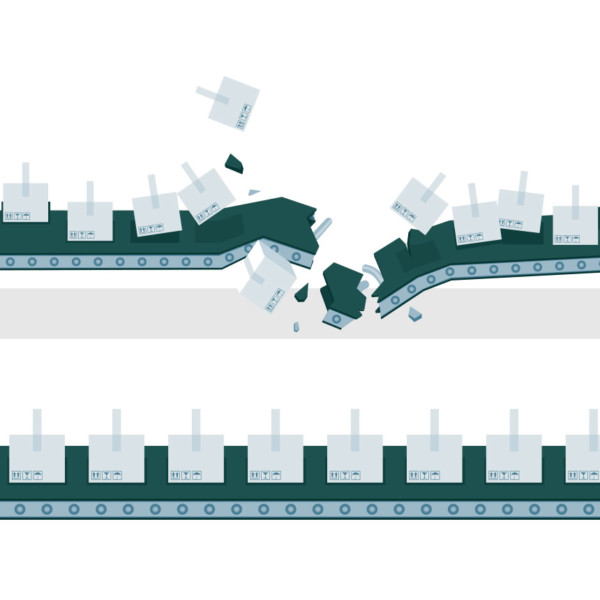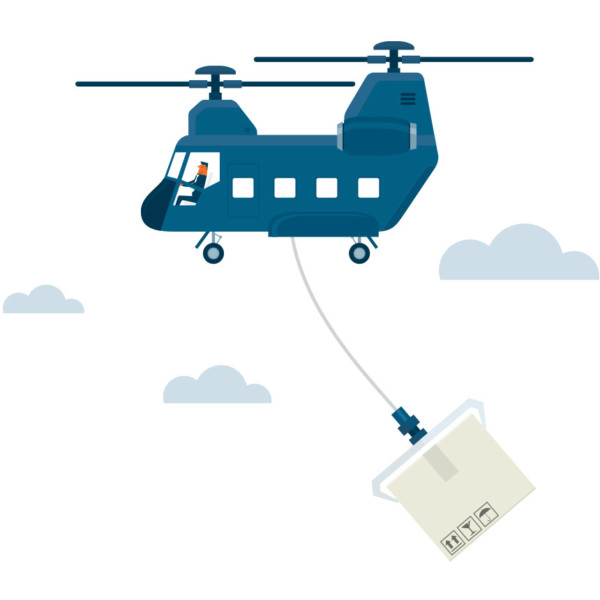Marcus Lemonis is famous for doing handshake deals, insisting “When you shake somebody’s hand, it’s gotta mean something.” The way Marcus sees it, you’re making a promise. The customer promises to fork over some money and you promise to deliver. Once you’ve both held up your end of the bargain, you’ve formed a bond. Great work. You’re establishing a track record. The customer knows they can come back to you again and again because you’ve already nailed it. You’ve formed a win / win relationship. That’s what running a great business is all about. This article teaches you how to create these win / win relationships, earn customer trust and loyalty, and help both you and your customer thrive.


The Importance of Earning Customer Trust
If you want to see the importance of customer trust, first let’s see what it’s like to lose it. Do you remember when Samsung’s S7 phone came out in 2016? The phone debuted to rave reviews, but soon after it hit the market, pictures started to surface of those phones catching fire. Samsung was able to trace it back to a battery issue and recall 2.5 million phones. But in a sense, the damage had already been done. They’d lost customer trust. Put yourself in the shoes of someone buying a phone. You expect a lot from this thing, including crystal-clear service, fast internet, and a high quality camera. You also expect that it won’t burst into flames. Customer trust eroded and the crisis cost Samsung a whopping $5.3 billion. They’ve since rebounded, but Samsung’s failure to deliver a safe and reliable product cost them big time.

Now, let’s take a look at the good version. Online merchants used to have a huge problem with customer trust. As it was a new process, there was just a little bit of skepticism baked into every transaction. So, companies needed a way to signal their reliability to customers. They started displaying trust seals on their site, which means a third party has checked up on them and says they’re legit. That third party will usually verify that the merchant has taken data security measures, processes transactions securely, and that they’re a verifiable business entity. Blue Fountain Media, a digital marketing group based in New York, found that adding a trust seal increased their conversions by 42%… and that increase was entirely from adding the seal.
In other words, that increase was all through trust. So, now that it’s pretty clear that customer trust pays off financially, let’s unpack the specifics.
The Benefits of a Loyal Customer Base
When you have a loyal customer base, you’ll start to see a few things happen and all of them are great. First, you can spend less money acquiring customers who are already on board. Next, you’ll be making more money off of each relationship through repeat business. Lastly, people are talking now more than ever. You’ve already seen people on Instagram sharing pictures of their food. No matter how you feel about that, it’s emblematic of a larger trend. Our oversharing culture means 49% of customers are willing to talk about a great experience online. So, give your loyal customers an interaction worth sharing and they just might tell the world.
By this point, you know you want customer trust. But as Marcus says, “If you don’t work for it, why do you think you deserve it?” That’s just his way of reminding you that nothing happens unless you make it happen. So, let’s take a look at seven ways you can earn customer trust. Because once you boil it down to a process, it’s way easier than you might think.


Seven Ways to Build Customer Trust and Loyalty
1. Be Transparent
When you’re running a small business, “no surprises” is a great motto. Wells Fargo probably should’ve taken that to heart, because as you might remember, they got caught opening millions of bank accounts in customers’ names without their permission. In some cases, Wells Fargo even forged customer signatures and secretly enrolled them in automatic bill-pay programs. Not only was this an egregious lack of transparency, but a crime, as the S.E.C. classified the whole thing as fraud. Many customers lost trust in Wells Fargo, then took it one step further and participated in lawsuits against the once-trusted bank. Those lawsuits would ultimately cost over $3 billion in settlements, and of course, even more through the loss of business. So, when you’re thinking about transparency, think of it from two angles. Make sure customers are getting exactly what they want and none of what they don’t.

2. Listen to Customers
The best small businesses are really a collaboration between you and your customers. You’re balancing what you think with what they think. Domino’s famously executed this concept in the early 2010s when they listened to customers and completely reinvented themselves. Domino’s had a problem with quality, which got so out of control that they realized their best option was just leaning into it. So, they ran a brilliant ad campaign where they not only listened to customer feedback, but publicized it. People talked about their pizza tasting like cardboard and their sauce tasting like ketchup.
Others even called it the worst pizza they’d ever tasted. Domino’s put it all out in the open, acknowledged the problem, and explained how they’d fix it. This extremely bold move earned back customer trust, signaled the arrival of a “New Domino’s,” and ushered in a new day of profitability.
3. Respect Customers
Marcus always says, “Businesses are based on relationships and relationships are based on people.” So, remember never to treat your customers like ATM machines. Always treat the customer, and their time, with respect. Have you ever peppered customers with too many emails? Have you ever tried to upsell them with a product that didn’t really fit? Are you waking them up with a newsletter that goes out at 3 A.M.? If you’ve done any of those things, don’t be hard on yourself. It’s okay.

Just acknowledge the problem and fix it. Is there a way you can show more respect for your customers and humanize those interactions? ITT Tech used to have their recruiters calling prospects three times per day every single day for the first three days. Just imagine what it would’ve felt like to be on the other end of that. It’s borderline harassment. Treating customers with respect is obviously a broad assignment, so when in doubt, create the customer experience that you yourself would want to have.
4. Don’t Overpromise
A really important part of meeting a customer’s expectations is creating those expectations. When Marcus worked with a family-run furniture company in Florida, he realized the customer service interactions could’ve done a better job of that.

It was all coming from a great place, but he noticed that the customer service department was telling people when their order would arrive without consulting production. Sometimes this led to production missing deadlines. Other times production would have to rush the order and sacrifice quality. Either way, they were damaging customer trust. It’s great to be ambitious and it’s a big part of how you got to where you are. But remember that there’s such a thing as being too ambitious. It might feel good in the moment to try and move mountains, but you’re better off delivering on a reasonable promise than blowing it over a crazy one.
5. Strive to Over-Deliver
When it comes to over-delivering, the online shoe-retailer Zappos basically wrote the book.

Their customer service is so good that other companies, from Southwest Airlines to Toyota, actually visit Zappos to try and learn from their process. Zappos offers free returns so customers can buy with confidence. They’ve also been known to deliver orders the very next morning. They’ll even help you find your shoe at a competitor’s website when they don’t have your size. That’s not only good, but eye-catchingly good. It’s become a whole thing. That’s the sort of over-delivery you should strive for. That’s the type of memorably good experience that turns people into brand ambassadors and has them sharing online.
6. Have Great Customer Service
You just saw customer service as an example of over-delivering, but it’s also important to look at it through the lens of customer trust. Think about all the things that can possibly go wrong during a customer interaction. Did they get the wrong order? What if the order never showed up at all? Was the order not quite up to snuff? In each of these situations, you’re at a crossroads. Their opinion of you is hanging in the balance and can go one of two ways. You’re either going to create a pretty bummed-out customer who’s not exactly itching to order from you again. Or you’re going to solidify customer trust by sending an important message; “You’ll definitely get what you want, either the first time, or after we make it right.” Make sure you take that second approach, because it’s like Marcus has said: “People make mistakes. I know I do. It’s how you resolve it that matters most.”
7. Communicate with Customers
Think about examples of communication in your own life. Would you rather be ghosted after a date? Or would you rather have at least some idea of where you stand? Your dialogue with customers is pretty similar. Are you making sure to loop them in? Do a walk-through of your ordering process and make sure customers know what’s going on every step of the way. Are they informed after their order has been received?

How about when their order ships? Was it out of stock and now there’s a delay? Think about relevant updates and make sure you’re getting people up to speed. Marcus paid a visit to a hair-care company in North Carolina that did an amazing job with this during the pandemic. The owner was reaching out to customers over Zoom and doing interviews with local media to keep everyone informed. You definitely don’t want to overdo it and be “that guy” sending out an email once per day about nothing. But run this communication philosophy through a common sense filter. Then look for opportunities to keep you and your customers on the same page.


Singer-songwriter Tom Waits once said “The way you do anything is the way you do everything.” Whether or not that’s true, who knows. But what matters is that your customers think it is. So, keep in mind that every interaction is a way to strengthen a pattern of success and build that expectation for the future. The more you really bring it, the more they’ll come back, and the more they’ll tell others to do the same. You’re not just creating a win / win, but the foundation for plenty more down the line.
- What are some things you currently do in your business to build trust and loyalty with your customers?
- What are some suggestions from this article that you can implement in your business now, to build trust and loyalty with your customers?
Tsukayama, H. (2018, February 23). How Samsung moved beyond its exploding phones. Retrieved from https://www.washingtonpost.com/business/how-samsung-moved-beyond-its-exploding-phones/2018/02/23/5675632c-182f-11e8-b681-2d4d462a1921_story.html
LAtimes.com. (2016, October 14). Samsung Galaxy Note 7 recall to cost at least $5.3 billion. Retrieved from https://www.latimes.com/business/technology/la-fi-tn-samsung-recall-20161014-snap-story.html#:~:text=A%20recall%20of%20the%20devices,giant%20at%20least%20%245.3%20billion.&text=Samsung%20Electronics%20said%20Friday%20that,to%20at%20least%20%245.3%20billion.
Keser, A. (n.d.). Did our VeriSign seal really increase conversions by 42%? Retrieved from https://www.bluefountainmedia.com/blog/verisign-seal-increase-conversions
Gingiss, D. (2019, April 10). Consumers are more willing to share positive experiences than negative ones. Retrieved from https://www.forbes.com/sites/dangingiss/2019/04/10/consumers-are-more-willing-to-share-positive-experiences-than-negative-ones/#21720a206a49
Flitter, E. (2020, February 21). The price of Wells Fargo’s fake account scandal grows by $3 billion. Retrieved from https://www.nytimes.com/2020/02/21/business/wells-fargo-settlement.html
Taylor, B. (2016, November 28). How Domino’s Pizza reinvented itself. Retrieved from https://hbr.org/2016/11/how-dominos-pizza-reinvented-itself
Moore-Gerety, R. (2016, December 7). What former employees say ITT Tech did to scam its students. Retrieved from https://www.npr.org/sections/ed/2016/12/07/502601724/what-former-employees-say-itt-tech-did-to-scam-its-students
Inc.com. (2020, August 25). Uncommon service: The Zappos case study. Retrieved from https://www.inc.com/inc-advisor/zappos-managing-people-uncommon-service.html





